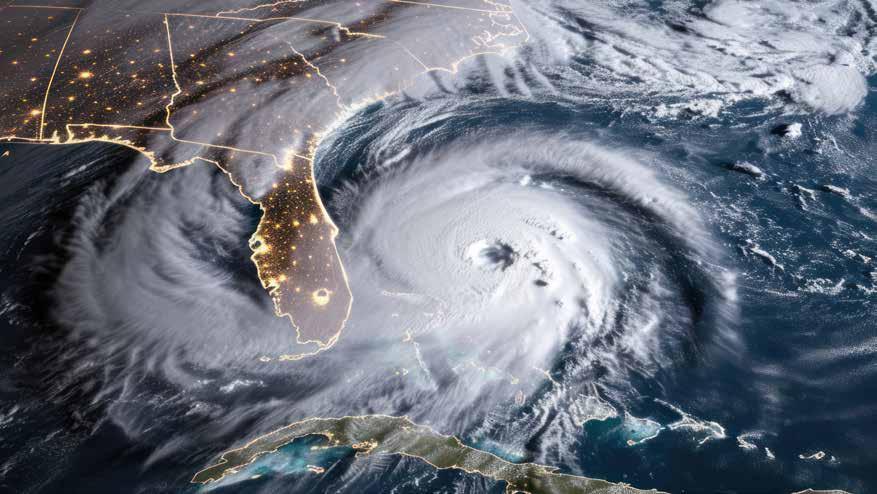
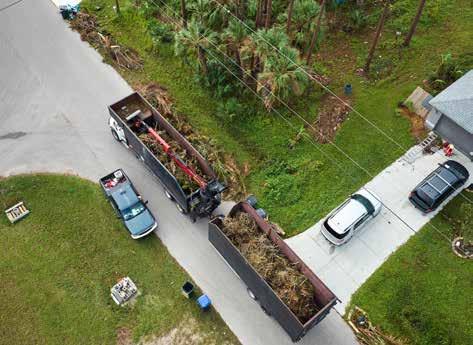
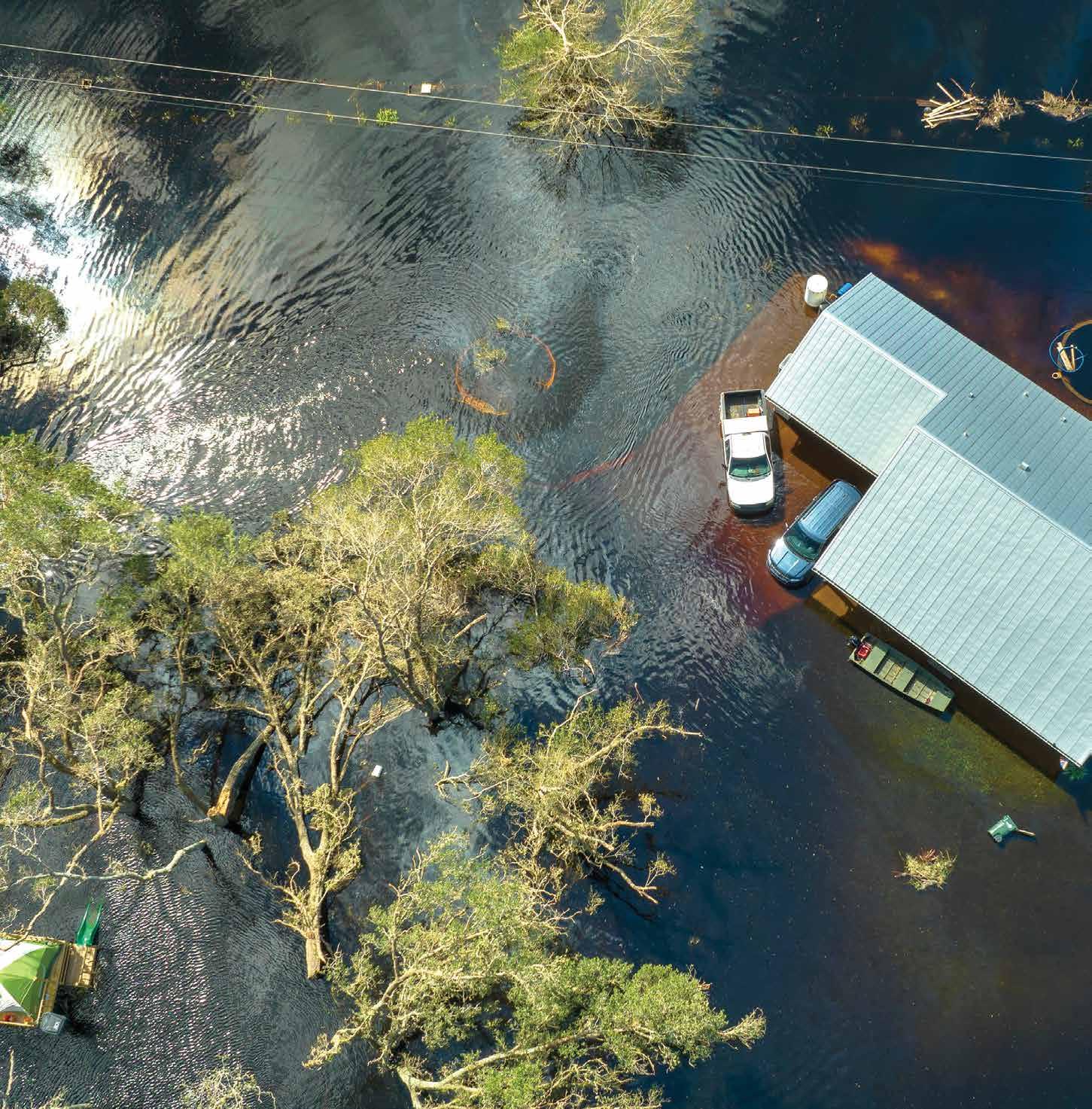
 Michael S. McWaters Executive V.P./CEO
Michael S. McWaters Executive V.P./CEO




 Michael S. McWaters Executive V.P./CEO
Michael S. McWaters Executive V.P./CEO
Most Floridians don’t need to be reminded of the risks that hurricane season poses. Throughout the year we enjoy plentiful sunshine and a temperate climate and, in return, we know that there will be a few months when we need to prepare for torrential downpours and impossibly strong winds.
At this time last year, we hadn’t yet been hit by Hurricane Idalia. We couldn’t have known that just two months later, over 28,000 SVEC consumer-members would find themselves without power and our system would have sustained the most damage in its history. In all, the repairs took the combined effort of thousands of workers and eight days to restore power to the vast majority of our system.
The speed and scale of that response was thanks to two key factors. The first is the cooperative principle that calls on co-ops to help each other in moments of need. Our crews worked hard when Idalia tore through our area, but they never would have been able to handle all the work in front of them without the help of others who came to our rescue.
As a cooperative, we can accept that help gratefully, knowing that soon enough we’ll have the chance to return the favor. This commitment to mutual aid is strong among cooperatives, and I can’t tell you how much peace of mind it brings us to know SVEC always will have a helping hand if we need it.
The second factor is our own preparation. We work hard throughout the year — not just when hurricane
season arrives — to make our system stand up stronger to the abuse of a major storm.
Even when a storm like Idalia does unprecedented damage, the response plans we have in place are a lifeline. Who knows how long it would have taken to organize food, shelter and local guidance for visiting crews without the cool heads and careful planning of our whole cooperative team.
Over the years, we’ve added more resources to our arsenal to respond to outages even faster and more effectively. The storm yard we built at our headquarters in 2021 has certainly been an asset as a base for visiting crews, while the ease of reporting and checking the status of outages by text message helps our crews respond faster than ever.
We do everything in our power to make sure our system is prepared for storms, but it is just as important that each of our members takes time to protect themselves and their loved ones. That’s why we have once again put together this hurricane preparation guide for our consumer-members. I hope each of you will take some time to look through it before the storm clouds gather. When they do, you can trust SVEC will be ready to act.
Kiosk Open 24 Hours
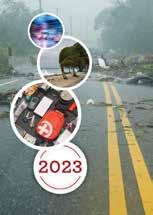
Nonelectric can opener
Paper plates, plastic cups
Cash — Banks and ATMs may not be available after a storm.
Bank account and credit card numbers
Insurance cards
Medical records
At a minimum, your storm kit should include the following items:
Water (1 gallon per person per day for seven days)
Nonperishable food
First-aid kit
At least a two-week supply of medications and medical supplies used regularly
Specialty items for infants, small children, the elderly and those family members with a disability
Seasonal or rain gear and sturdy shoes or boots
Clothing
Vehicle
Keep your vehicles’ tanks filled with gasoline
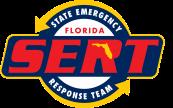

Pet care items
Pet food and water
Bowls for food and water
Proper identification
Pet carrier or cage
Muzzle and leash
Medications
Special needs items
At least a seven-day supply of nonperishable, packaged or canned food and beverages, snack foods, juices, baby food and any special dietary needs
Flashlight — Do not use candles and be sure to have enough batteries.
Battery-operated or hand-cranked NOAA weather radio
Other personal documents
Set of car, house and office keys
Waterproof container for storing items
Important phone numbers, including:
Family
Friends
County emergency management
Doctors, banks, schools and veterinarian
SVEC’s outage reporting number, 800-752-0025

We work diligently to fortify our system against storm damage, but outages are inevitable. If you lose power, there are several convenient ways to report the outage and get the lights back on as soon as possible.
Our outage management system uses caller ID to quickly identify your service location based on your phone number. This makes reporting easier for you and helps us respond as quickly as possible. Make sure we have your current phone number on file before you report an outage, or consider signing up to receive outage-related text messages.

Use the SmartHub mobile app.
Website Visit svec-coop.com, log in to your account and click on the “My Profile” tab.
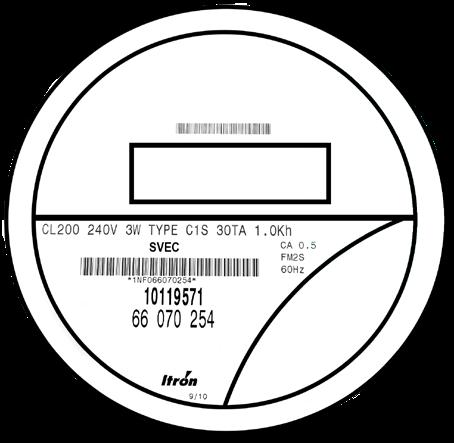
Text Text “out” to 800-752-0025. To enable this option, you must first authorize it by texting “SVEC” to 800-7520025. The text option is only available to members with fewer than five accounts.
Call Dial 800-752-0025 to report an outage.
NOTE
You may be asked for your meter number. Here’s where you can find it on your meter.
operate your generator in a well-ventilated area outside your home.
run it in your garage or near doors, windows and vents. The carbon monoxide produced by a generator could be toxic in an enclosed space.
start the generator before connecting appliances.
connect a standby generator directly to your home’s electrical system.
have a professional install an approved generator transfer switch for a stationary generator — keep your house circuits separate from the cooperative’s.
plug appliances directly into the outlet provided on a portable generator.
use a heavy-duty extension cord to connect electric appliances to the outlet on the generator.
If you see stopped law enforcement, emergency, sanitation, utility service or tow vehicles on the side of the road, remember to move over a lane.
If you can’t move over, slow down to 20 mph below the posted speed limit. If the posted speed limit is 20 mph or less, slow down to 5 mph.
When storms damage electrical components, members often assume the cooperative bears responsibility for repairs. But depending on the equipment’s location, some repairs may be your responsibility.
Whether you have above-ground or underground service, you may need to repair certain components before power to your home can be restored. Always put safety first when working with electrical equipment, and call SVEC if you have questions.
Once a storm passes, SVEC crews often work long hours to restore power. It begins with the repairs that get the lights on for the greatest number of people in the shortest time possible. Here’s a breakdown of the steps we take to restore power safely and efficiently.
These lines serve thousands of consumer-members and must be repaired so other parts of the system can operate.
Repairing damage to feeder lines can bring the lights back on for entire communities or housing developments.
Each substation serves hundreds, or even thousands, of consumer-members. Repairing this equipment can restore power to many households at once.
These smaller supply lines are next. They deliver power to transformers outside businesses, schools and homes.
Locations still without power may require repairs to the service line between a transformer and the residence or businesses.
After a storm has passed, it’s time to start thinking about what’s next. With safety in mind:
Report any electrical outages in your area to SVEC.
Use protective gear, like gloves, during any cleanup.
Always assume downed power lines are energized and stay well away from them.
Never attempt to remove tree limbs or branches from power lines.
Give emergency and utility vehicles the right of way to allow for faster recovery.
If evacuated, monitor reports to determine when it is safe to return home.
Contact friends and family to let them know you are safe.
svec-coop.com/storm-updates

instagram.com/sveccoop facebook.com/sveccoop
WQHL 98.1 FM, Live Oak and WJHC 107.5 FM, Jasper
Downed power lines can energize the ground for up to 35 feet! If you encounter a downed power line, notify SVEC immediately.